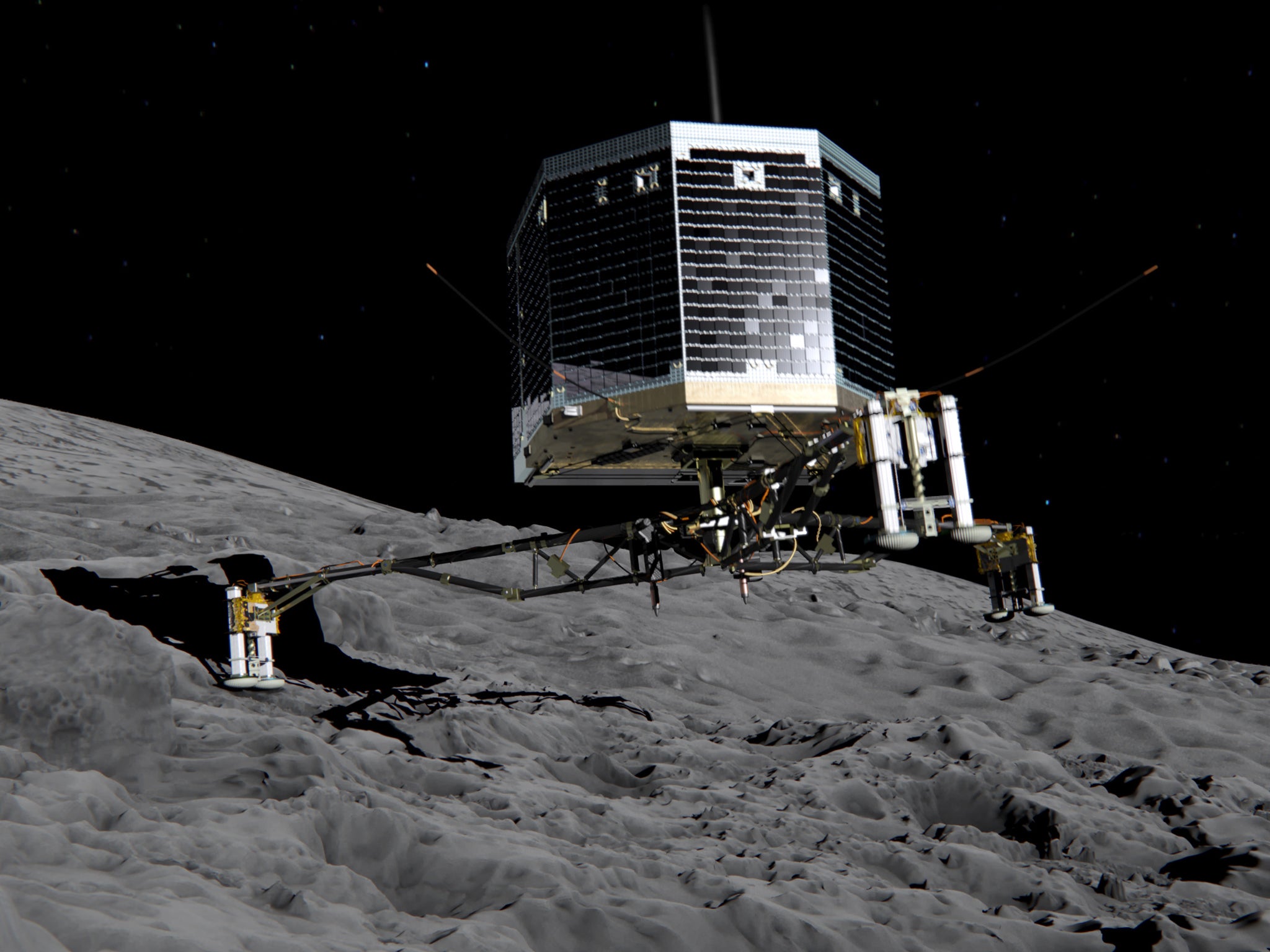Philae lander is probably completely dead as European Space Agency’s mission approaches its end
The team will keep listening for a message — but it's unlikely ever to come

Scientists’ attempts to get back in touch with the Philae lander appear to have failed, probably meaning that we have lost contact with the little comet-rover.
The team looking after the mission has sent a last message to the craft in an attempt to wake it up. But that doesn’t appear to have succeeded, likely meaning that the Philae lander — sent to Comet 67P/Churyumov-Gerasimenko — will never be able to speak to us again.
If the lander doesn’t wake up, it will stay silent until the lander’s mission finishes at the end of this month.
Philae was one of the European Space Agency’s biggest success stories when it landed on its comet at the end of 2014. But it was immediately hit by problems — the harpoons that anchored it to the surface never fired, and it appears to have got stuck out of the way of the sun that would keep it powered up.
Scientists have been intermittently sending out messages to it, in the hope of hearing back. But it appears that the lander might have moved into a shaded area and so be unable to charge.
The team had hoped that the most recent mission might be enough to shift the lander, helping it pick up a little bit of charge.
"At best, the spacecraft might shake dust from its solar panels and better align itself with the Sun," explains Philae technical manager Koen Geurts at the lander’s control centre.
But Philae doesn’t seem to have been able to respond. Scientists hope that doesn’t mark the end, but the lander isn’t in a particularly safe location on the comet.
And at the end of January, the comet will have travelled so far from the sun that it will be too cold for Philae to turn back on anyway. The communication unit will however still keep listening for Philae after the January window closes.
Join our commenting forum
Join thought-provoking conversations, follow other Independent readers and see their replies
0Comments